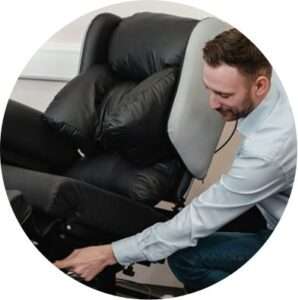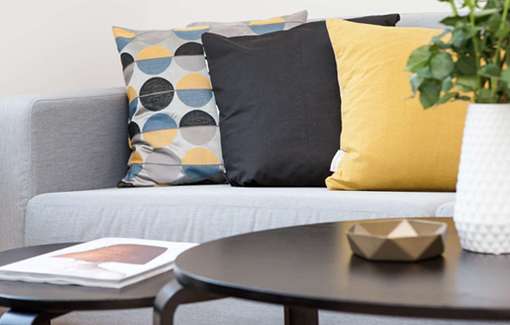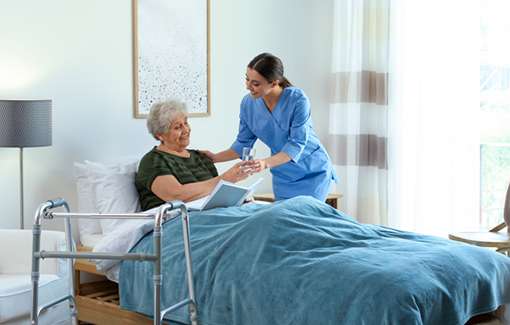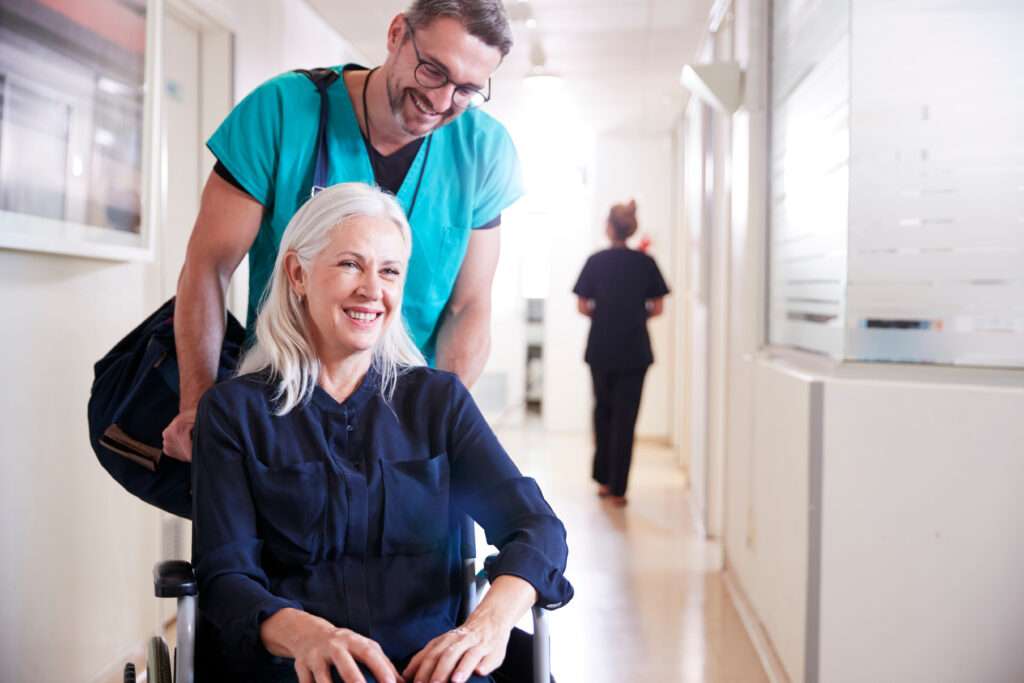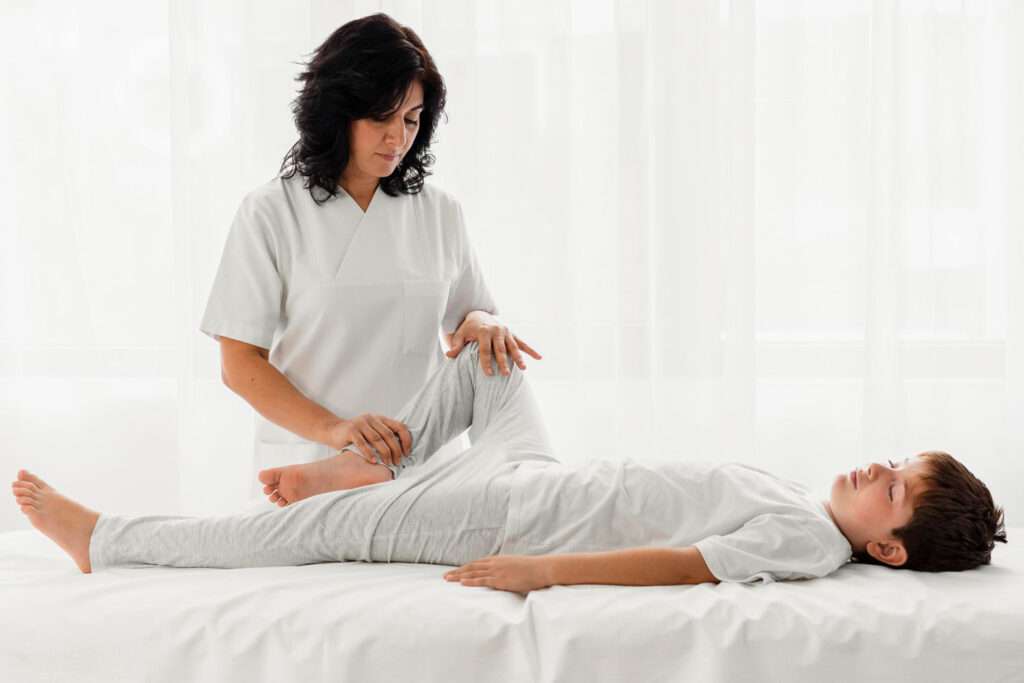Ophthalmology is one of the medical specialties most affected by work-related musculoskeletal disorders (WRMSDs).
Many eye clinics will invest in high-tech examination equipment but overlook workplace ergonomics.
In this article we look at how purpose-built patient seating can promote more effective working practices, reducing burnout within the ophthalmology workforce.
Jump straight to…
What is Medical Ophthalmology?
Medical ophthalmology is the non-surgical division of eye care that focuses on diagnosing and treating eye diseases. Instead of performing operations, medical ophthalmologists use medicines, eye drops, injections, and laser treatments to manage conditions and protect vision.
These doctors often spend long hours working closely with patients and performing detailed eye exams. Because the work requires such precision and focus, it can put a lot of strain on the neck, shoulders, and back. This is why having the right chair and good ergonomic setup in the clinic is so important for sustainable working practice in ophthalmology clinics.
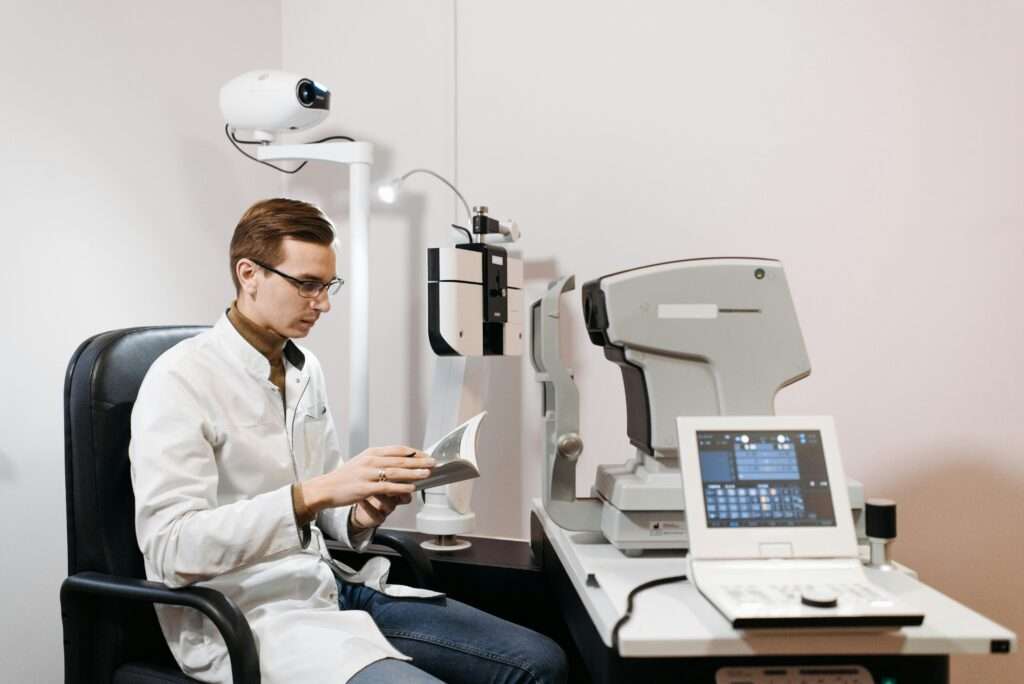
The Ergonomic Issue
The prevalence of WRMSDs amongst ophthalmology staff has led to 37% of ophthalmologists reporting burnout and 14% even considering early retirement, due to the physical toll that continual repetitive adjustments and awkward postures are taking on their bodies.
A 30% shortage in workforce capacity is predicted by 2035, as reported by Ophthalmology Times.
When clinicians are struggling with neck and back pain, patient care suffers and expensive equipment isn’t utilised effectively. This issue has forced industry leaders to look closely at sustainable workforce practices, and how workforce health can be improved so that Ophthalmology can continue to meet future demand.
A closer look at biomechanics in ophthalmology clinics has shown that:
- Clinicians are frequently adopting awkward postures and contorting their bodies around the patient, and leaning forward when conducting eye slit tests.
- They are having to repeatedly readjust the equipment between patients, which requires fine motor skills to achieve the level of precision required, leading to repetitive strain injury.

These findings have drawn the insight that it is easier to adjust the patient to the workstation rather than the other way round, which crucially means that the patient chair can make the biggest difference in improving workstation ergonomics.
How Patient Seating Can Improve Ophthalmology Results
Ergonomic patient seating not only reduces operator strain, it improves the quality of results and overall clinic performance.
Image quality
Secure seating results in less vibration and involuntary patient movement, reducing motion artifact in image results.

Patient experience and flow
Getting less-mobile patients, such as elderly and bariatric in and out of awkward chairs not only makes life more difficult for patients and staff, but slows up ophthalmology procedures, resulting in reduced output.
Easy Adjustment
The patient chair needs to adjusted to different height and size patients, to accommodate as wide a range of patients as possible. This is important for fast-paced, high throughput clinics, and saves the need for workplace reconfiguration.
The VELA Move+ Ophthalmology Chair
Purpose-built to meet the needs identified above, the VELA Move+ has won great reviews by improving efficiency, precision and staff health in eye clinics throughout Europe.

VELA Move+ Ophthalmology Chair
Improved Staff Ergonomics
First and foremost, the VELA Move+ Chair resolves the issue of poor workplace posture and staff ergonomics.
Handset height adjustment – the electric height adjustment within easy reach of the operator reduces their range of movement, and ensures they maintain a neutral position while working.
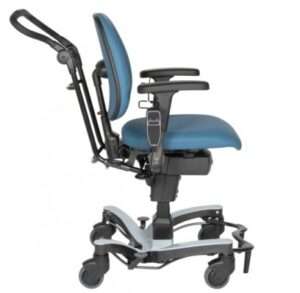
Ergonomic push handle and smooth rolling wheels – these ensures the patient can be moved easily from one station to the next, promoting safe, single person patient handling.

Patient Safety and Stability
The central brake on the base of the chair keeps the patient safe and stable during the examinations. This reduces the chance of involuntary movements and improves the precision of results.

Compatible Design
The H-frame base and foldback armrests ensure the chair is compatible with all major ophthalmic equipment, streamlining procedures. Adjusting the height and angle of tilt can ensure the patient is quickly and easily moved into the right position.
Easy Access
Patients who have mobility issues such as elderly, frail or bariatric patients can transfer easily into the chair by folding back the armrests and footplate.
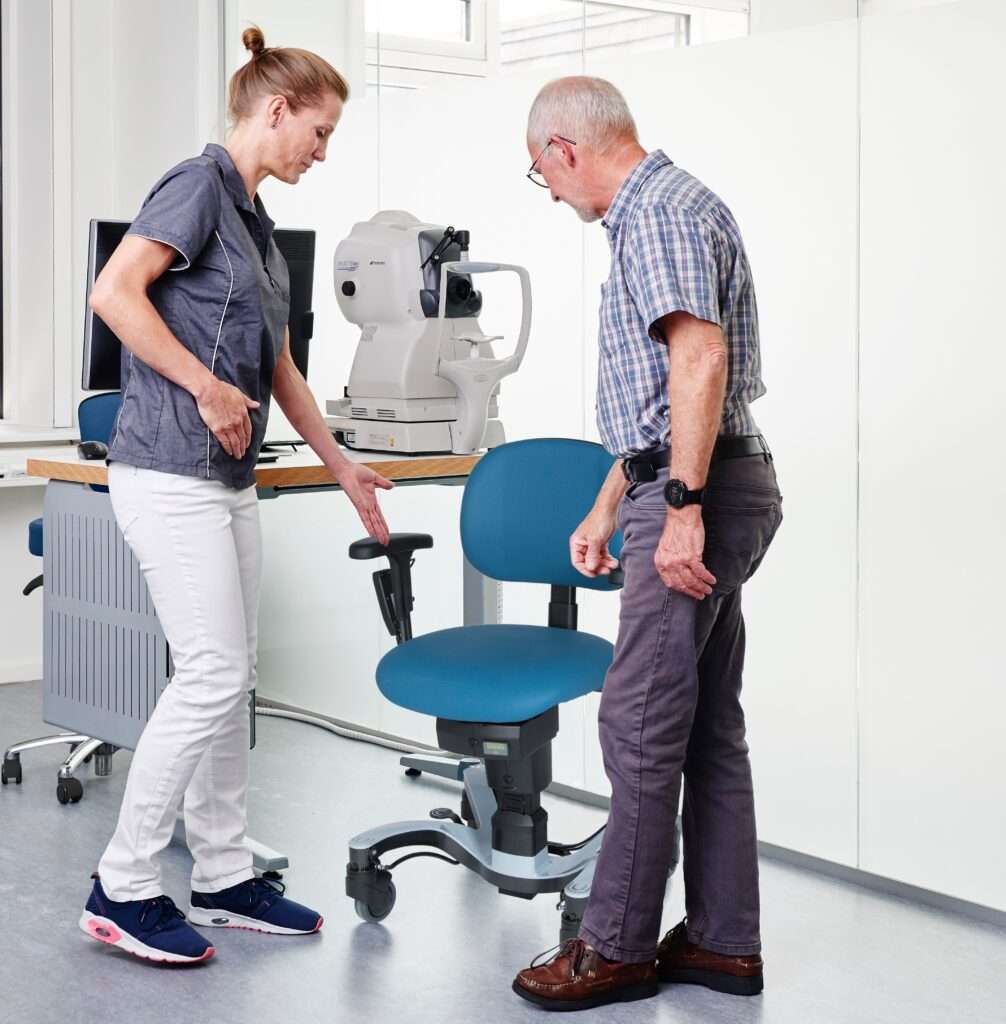
Conclusion
As eye clinics get busier and the demand for eye care keeps growing, it’s important to ensure sustainable working practices for ophthalmologists who deliver that care.
The VELA Move+ Ophthalmology Chair helps create a safer, healthier, and more efficient workplace. Investing in the VELA Move+ Chair can reduce fatigue and MSDs for clinicians, speed up clinic throughflow, and improve the overall quality of care.
Frequently Asked Questions (FAQs)
Q: Why is ergonomics so important in ophthalmology clinics?
A: Ophthalmologists often perform repetitive, precision-based tasks while leaning forward or working in confined spaces. Poor ergonomics lead to musculoskeletal strain, which can affect both clinician well-being and diagnostic accuracy.
Q: How does the VELA Move+ Chair improve clinical outcomes?
A: It allows for precise patient positioning, minimises vibration and motion artifacts, and reduces the physical strain on clinicians, resulting in more accurate results and improved efficiency.
Q: Is the VELA Move+ suitable for all ophthalmic equipment?
A: Yes, its H-frame base and adjustable design make it compatible with most slit lamps, imaging devices, and other ophthalmic diagnostic tools.
Q: Can the VELA Move+ be used for mobility-impaired patients?
A: Yes, the fold-back armrests and footplate, combined with the stable braking system, make it safe and accessible for patients with reduced mobility.



